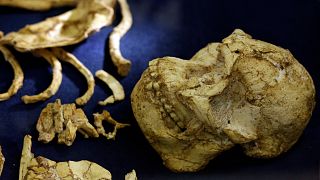Ethiopia
The fossilised remains of Lucy, one of the world’s most famous prehistoric skeletons, have left Ethiopia for display in Europe for the first time. The 3.2-million-year-old specimen, belonging to the early human ancestor Australopithecus afarensis, will be exhibited at Prague’s National Museum for two months.
Discovered in 1974 in Ethiopia, Lucy’s partial skeleton—about 40% complete—offered groundbreaking evidence of early bipedalism, a defining step in human evolution. “Her scientific value is one thing,” says Yohannes Haile-Selassie, Director of the Institute of Human Origin at Arizona State University, “but Lucy… is such an iconic specimen that she belongs to the whole world. Sharing her with the rest of the world is something that everybody would love to see and to do.”
Haile-Selassie likens Lucy’s journey to that of a “diplomat,” forging connections between people and governments. Tourists visiting her in Addis Ababa ahead of the trip expressed mixed feelings—some celebrated the chance for more people to connect with humanity’s shared history, while others argued she should remain in Ethiopia.
Lucy will be displayed alongside Selam, a fossil of a baby Australopithecus discovered in the same region and dating back even further. Czech National Museum Director General Michal Lukeš called the loan “a unique insight into the past” and a chance to deepen understanding of humanity’s roots.












01:07
Thieves steal ancient statues from Syria's National Museum of Damascus
Go to video
Protesters in Nigeria disrupt opening of major West African art museum
01:14
Civil trial over payouts to families of Ethiopia Boeing crash victims to proceed
00:55
Kenya's Kilimo and Ethiopia's Aderra win Istanbul Marathon
01:28
Egypt's immense new antiquities museum opens after two-decade build
Go to video
Grand Egyptian museum set for historic opening, showcasing the full legacy of Tutankhamun